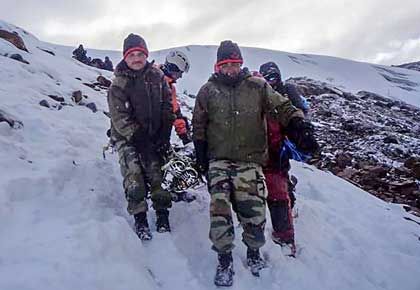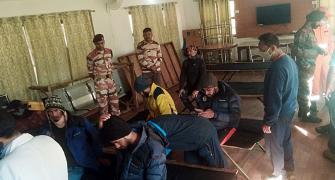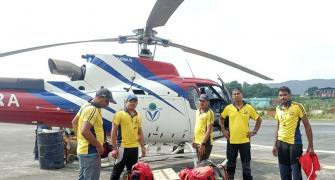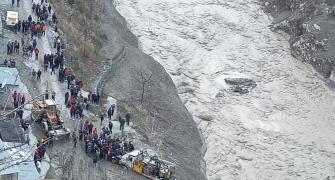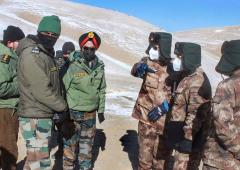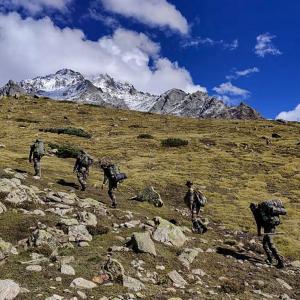27 mountaineers perished in an avalanche in the mountains of Uttarakhand last week.
The mountaineers were returning from a trek to the Draupadi's Danda mountain peak when disaster struck at 8.45 am in the morning.

Among the 27 dead in the Uttarakhand avalanche of October 4, 2022 are two women instructors from the Nehru Institute of Mountaineering who were part of the 41 member team comprising 34 trainees and 7 instructors.
Savita Kanswal, 26, and Naumi Rawat, 23, the two lady instructors were cremated over the weekend in their respective villages in Uttarakhand.
Kanswal, an accomplished mountaineer, is cited as the first Indian woman to climb two of the highest peaks in the world -- Everest and Makalu -- in one season. She had wanted to climb the seven highest peaks on seven continents.
"She was dynamic, strong and eager. She came from a very humble background and showed a passion for mountaineering at a young age. She was trained at NIM and had planted the flag of the Youth Foundation when she scaled Everest," says Colonel Ajay Kothiyal (retired), former President of the Nehru Institute of Mountaineering, one of the country's premier mountaineering institutes.
The Youth Foundation is an organisation started by Colonel Kothiyal to prepare youngsters from the hills of his native Uttarakhand to join the armed forces and other uniformed forces.

The group of mountaineers trapped in last week's avalanche comprised men and women, including Lieutenant Colonel Deepak Vashishth, a doctor in the Indian Army.
Lt Colonel Vashishth is among the missing mountaineers who fell into a crevasse after being overwhelmed by an avalanche which is akin to being smashed with a big boulder of snow.
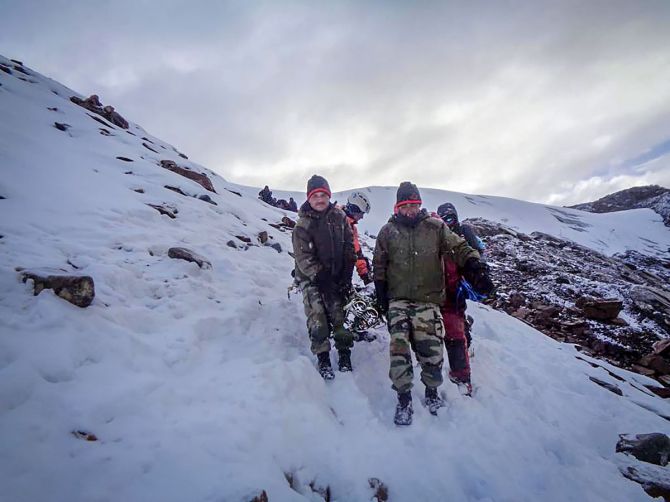
The ongoing rescue operations are being conducted in difficult weather conditions. Colonel Amit Bisht, current President, Nehru Institute of Mountaineering, is among those leading the rescue operations. Colonel Bisht, Sena Medal, is an Indian Army pilot who has climbed Mount Everest.
"Rescue operations at those heights in the snow is a highly specialised task requiring great skill. Such is the magnitude of the difficulty that it would take 16-20 men to pull out one body," says Colonel Kothiyal, an accomplished mountaineer who has climbed 23 peaks including Everest twice.
"The rescuers anchor ropes, go down, fix the body and pull them up at very high altitude and hostile weather," continues Colonel Kothiyal who has had the experience of clawing himself out after being buried in snow after an avalanche.
The rescuers carry specialised equipment including heating devices. The Nehru Institute of Mountaineering is the only institute in the country that conducts training for rescue operations. The Kedarnath rescue and rebuilding exercise was carried out by the institute in 2013.
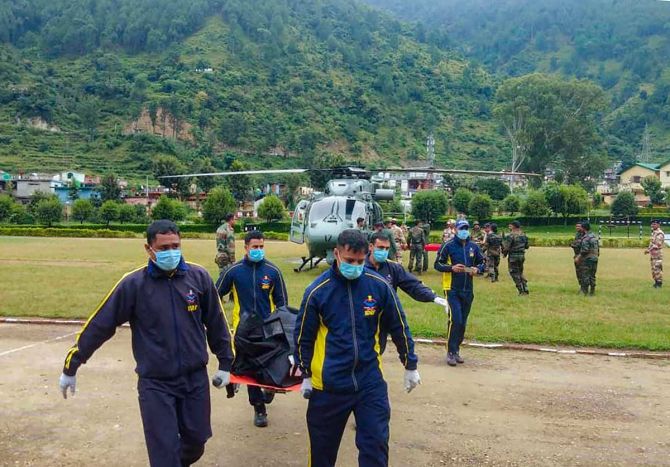
The 41-member team was returning from Draupadi Ka Danda at a height of 18,000 feet as part of an advanced mountaineering training course. The Nehru Institute of Mountaineering conducts a 28 day basic course. Only those who get the best grades qualify for the institute's subsequent 28 day advance courses.
The initial training is at a height of 4,000 feet, after which the trainees advance to a two-day trek at 13,000 feet which is the Nehru Institute of Mountaineering base camp.
The course provides training in operating in glaciated terrain, snow survival, acclimatisation, communication, navigation, decision making, how to identify avalanche prone areas and what actions to taken if confronted by an avalanche, etc.
The advanced course culminates in a mountaineering expedition to Draupadi Ka Danda, the Nehru Institute of Mountaineering's training peak.
The distance from the base camp to the location where the tragedy occurred is a day's trek.

According to plan, the group would have climbed Draupadi Ka Danda at night aided by head torches to navigate the route. The return was to be undertaken at daylight.
The group was hit by an avalanche -- a veritable wall of ice -- on their descent at around 8.45 am, resulting in 29 climbers falling into a deep crack in a thick layer of ice.
The climbers would be carrying equipment weighing almost 10 kgs, apart from their clothing gear. They would have been covered in soft snow after the fall which would have gradually buried them under its weight.
"Mountaineers apply survival techniques when buried in an avalanche which includes manoeuvers to dig themselves out. They are also taught how to hit the snow with the fist around the face to make space so that you can breathe," says Colonel Kothiyal.
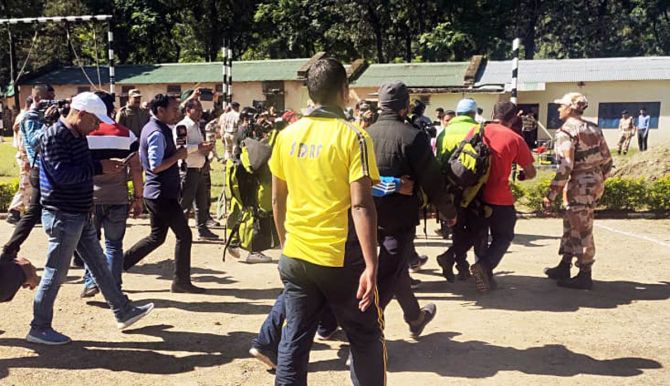
To figure out whether they are trapped facing up or turned upside down in the snow, mountaineers apply the 'Spit test'. They spit forcefully and if the spit travels down due to gravity, they deduce they are facing up which helps them in trying to dig themselves out in the right direction rather than digging deeper into the snow.
However, even the most experienced of mountaineers cannot survive when buried deep inside a 60 feet crevasse after being hit by an avalanche.
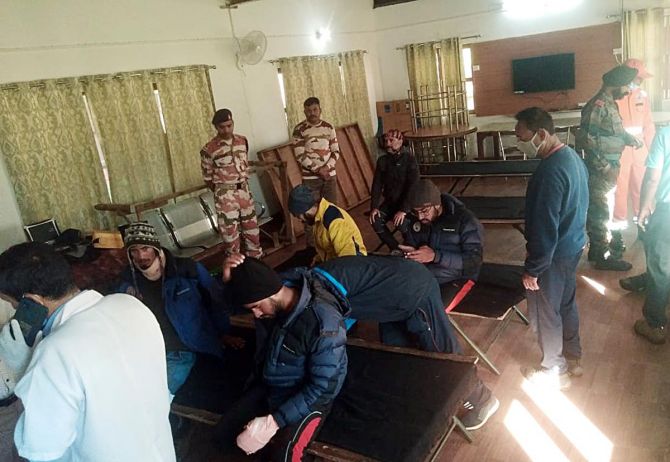
According to National Geographic, 'an avalanche begins when an unstable mass of snow breaks away from a slope. The snow picks up speed as it moves downhill, producing a river of snow and a cloud of icy particles that rises high into the air. The moving mass picks up even more snow as it rushes downhill.'
'A large, fully developed avalanche can weigh as much as a million tons,' points out National Geographic. 'It can travel faster than 320 kilometers per hour.'
Those from the team who survived the avalanche may have missed the full blow of the force of nature or were lucky to have not fallen into the crevasse.
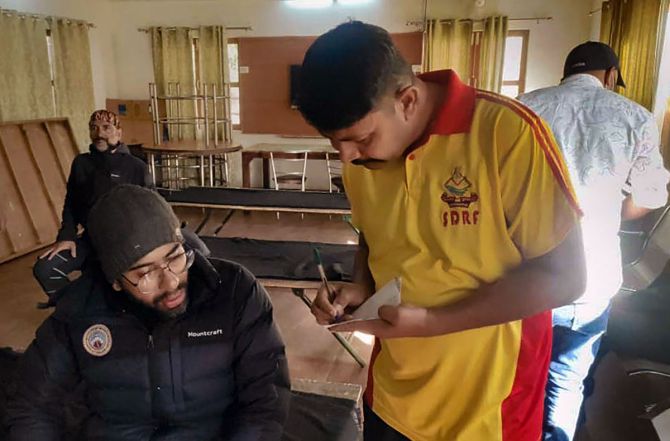
The survivors have suffered major and minor injuries. It is the worse mountaineering tragedy the country has ever suffered.
"Mountaineering is fraught with extreme danger," says Colonel Kothiyal, who was awarded the Shaurya Chakra for his mountaineering feats, "but the call of the mountains is such that mountaineers will always seek to conquer new peaks."
Photographs curated by Anant Salvi/Rediff.com
Feature Presentation: Ashish Narsale/Rediff.com
